& Sustainable Rainforest Enrichment Project
I stumbled onto the Tropic Ventures Web site while trying to track down local sources for live Bamboo shoots. Bamboo is great for controlling surface water erosion, but grows like a weed (It is a grass, after all). Among other activities, Tropic Ventures offers a walking tour and a home cooked gourmet lunch for $20. That sounded like a deal so I wanted to check them out.
 The group’s ‘mission objective’ as quoted from their Web site:
The group’s ‘mission objective’ as quoted from their Web site:
“The project’s mission is to demonstrate the economic use of rain forest land using methods that do not destroy the forest ecology.”
Their black and white brochure introduced
me to a new word-
Silviculture.
Per Wikipedia: “Silviculture is the practice of controlling the establishment, growth, composition, health, and quality of forests to meet diverse needs and values of the many landowners, societies and cultures.”
A Spanish idea. OK… I like that. I’m no tree-hugger, but I do support and expect the responsible management of renewable resources. Otherwise, they are not technically renewable if we use them up. Time for new management.
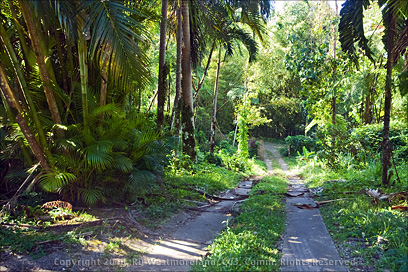 The Project was founded in 1983 and is located up above Patillas on 1,000 acres of an old coffee plantation of which only 230 acres is used for this program. 40,000 exotic hardwoods have been planted to date. Remnants of the old road, running up into the highlands can still be seen in a few places. Earlier this year, a crew of volunteers from EarthWatch helped clear some of it. They are a non-profit, volunteer group involved with environmental issues, all over the globe. Very popular with Eco-Tourists. A way to make real change, one person at a time.
The Project was founded in 1983 and is located up above Patillas on 1,000 acres of an old coffee plantation of which only 230 acres is used for this program. 40,000 exotic hardwoods have been planted to date. Remnants of the old road, running up into the highlands can still be seen in a few places. Earlier this year, a crew of volunteers from EarthWatch helped clear some of it. They are a non-profit, volunteer group involved with environmental issues, all over the globe. Very popular with Eco-Tourists. A way to make real change, one person at a time.
Highway 184 skirts this whole area. Since they get 120 inches of rain a year, it would not take long for the jungle to overtake it. Weather-wise, we were very lucky, it was a nice clear day, the day we were there. Tropic Ventures is located at Kilometer 15.9, but most markers are non-existent. 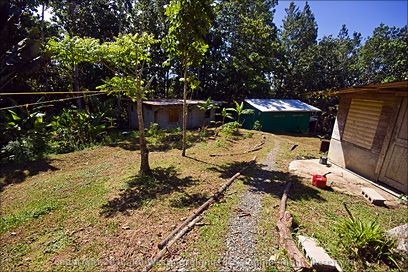 Fortunately, they have a couple of easy to spot signs. In fact, the old Tropic Ventures sign looks like something out of an episode of ‘LOST’. The drive up Hwy 184 from Patillas to their place was pretty uneventful. The higher you go, the cooler it gets.
Fortunately, they have a couple of easy to spot signs. In fact, the old Tropic Ventures sign looks like something out of an episode of ‘LOST’. The drive up Hwy 184 from Patillas to their place was pretty uneventful. The higher you go, the cooler it gets.
Las Casas de la Selva is located at 1,920 feet above sea level.
Hence the reason they get so much rain. The driveway off the highway was quite steep. Fortunately, it was paved with cement, but ended as soon as you hit the main gate at the bottom. From there on, it was relatively flat, but rocky. 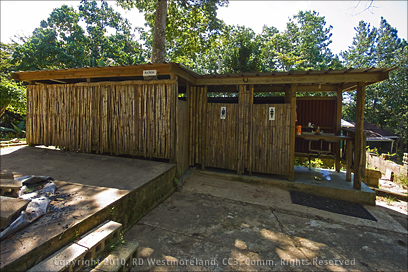 We were in a Dodge pickup so it was no big deal. A small compact would have a harder time with the rocky driveway. Parking was kind of tight at the end since we were not the only ones visiting.
We were in a Dodge pickup so it was no big deal. A small compact would have a harder time with the rocky driveway. Parking was kind of tight at the end since we were not the only ones visiting.
They describe the grounds as a ‘homestead’ and that’s pretty much dead on. I’ve seen many homesteads while living in Alaska. This site seemed typical of the sprawl you see from years of assorted activity… Older cement foundations in various states of decay, a large metal building used as a wood shop, greenhouse like structures, covered shelters for camping out and storage, a veggie garden, 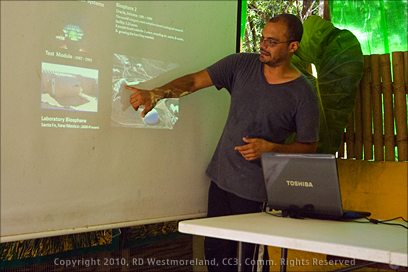 a dedicated restroom area and an unfinished cement structure down below. A hodge-podge of things and stuff spread all over. No trash about, it was neat, but looked cluttered. They had Internet and electricity too.
a dedicated restroom area and an unfinished cement structure down below. A hodge-podge of things and stuff spread all over. No trash about, it was neat, but looked cluttered. They had Internet and electricity too.
Besides ourselves, there were 3 girls and another couple in this tour.
‘3T’ Vakil introduced her self as the Project Director and thanked us all for coming. Before the formal presentation, she showed us around the main area and where the restrooms were. Coffee and bottled water was available.  The initial presentation was about 45 minutes long and made by Andres Rua. He is the Technical Director and resident expert for all things forestry related. He delivered the presentation in Spanish so that pretty much counted me out. He does speak very good English and passed a few key points in English so it wasn’t too bad. If you arrange it in advance, they can do an all English presentation.
The initial presentation was about 45 minutes long and made by Andres Rua. He is the Technical Director and resident expert for all things forestry related. He delivered the presentation in Spanish so that pretty much counted me out. He does speak very good English and passed a few key points in English so it wasn’t too bad. If you arrange it in advance, they can do an all English presentation.
After a short break, we gathered for the hike through the forest. I had read on their site that you need to wear sturdy shoes or hiking boots for this and they were not kidding. 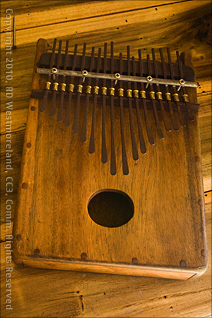 One of the girls showed up in a pair of ‘jelly sandals’, but managed to score a pair of running shoes for the trek. Good thing too. This was nothing like the hike through El Yunque. In a word, it was primitive.
One of the girls showed up in a pair of ‘jelly sandals’, but managed to score a pair of running shoes for the trek. Good thing too. This was nothing like the hike through El Yunque. In a word, it was primitive. 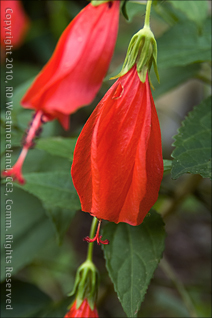 I was OK with it, but most tourists (especially the very young or mobility restricted) looking for a peek at PR’s interior should think twice. A van ride to El Yunque or the Botanical Gardens of Caguas would be much better.
I was OK with it, but most tourists (especially the very young or mobility restricted) looking for a peek at PR’s interior should think twice. A van ride to El Yunque or the Botanical Gardens of Caguas would be much better.
If, on the other hand, you are an ‘Eco-Tourist’ or certifiable ‘tree hugger’, Tropic Ventures is made for you.
Camping out under the stars.. hearing the Coqui for the first time, all very cool stuff. Or a nature photographer looking for something off the beaten path. This is much more a Puerto Rican experience.
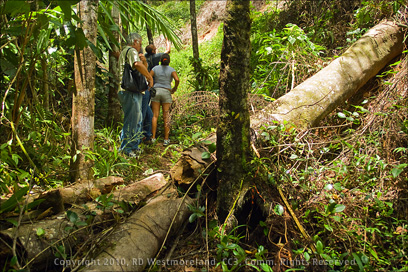 They have volunteer programs as well, but I never could get my head around the idea of paying some one to work for them. Something I call “The Tom Sawyer Effect”. In the end, it’s suppose to be about doing “good works”. Unfortunately, these kind hearted souls are often taken advantage of, for profit or personal gain.
They have volunteer programs as well, but I never could get my head around the idea of paying some one to work for them. Something I call “The Tom Sawyer Effect”. In the end, it’s suppose to be about doing “good works”. Unfortunately, these kind hearted souls are often taken advantage of, for profit or personal gain.
That’s not to say, I think EarthWatch or Tropic Ventures is taking advantage of anyone, I don’t. Together, they present a positive dynamic.
Into the Wild Green Yonder…
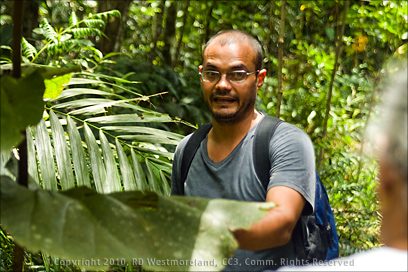
The hike was led by Andres while ‘3T’ was busy preparing the late lunch.
Andres would pause every so often to explain one aspect or another of what we saw. Mostly in Spanish so this kind of freed me up to shoot. He did describe the efforts being made to improve the path and it badly needs it. The trail meanders over a several creeks, dead fall and into open areas where work is being done to replant. Not always easy going. Mostly up and down hilly terrain. As was my complaint about The Dry Forest of Guanica, they really 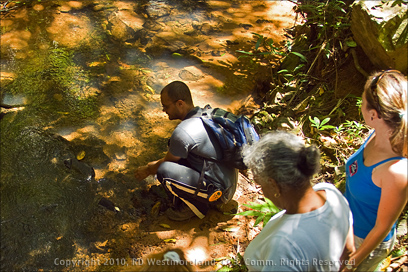 need a few simple wooden benches about half way in so you can take a short break, off your feet. Too many critters running around to set my butt on the ground. Fire ants are real nasty. At least there was cover from within the trees.
need a few simple wooden benches about half way in so you can take a short break, off your feet. Too many critters running around to set my butt on the ground. Fire ants are real nasty. At least there was cover from within the trees.
Our first stop was at a small stand of tree ferns. Yes, trees. They grow to 12-18 foot tall with thick trunks. He explained how the trunks could be cut in sections, hollowed out and turned into works of art. Colorful examples of these can be seen standing behind the bowls in one of the product shots.
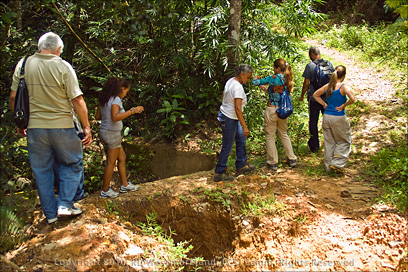 A good ways into the rainforest, he stopped to show us the oldest tree in the area. A 150 year old Ausubo stood out from all the rest. They were harvested for ships masts in the past. This one would have been a sapling back then. Another time, Andres spoke of when they first tried to install a telegraph line from San Juan to Ponce. Evidently, the contractors were sold wooden poles that were certified by a government expert to be bug resistant when in fact, they were not.
A good ways into the rainforest, he stopped to show us the oldest tree in the area. A 150 year old Ausubo stood out from all the rest. They were harvested for ships masts in the past. This one would have been a sapling back then. Another time, Andres spoke of when they first tried to install a telegraph line from San Juan to Ponce. Evidently, the contractors were sold wooden poles that were certified by a government expert to be bug resistant when in fact, they were not.
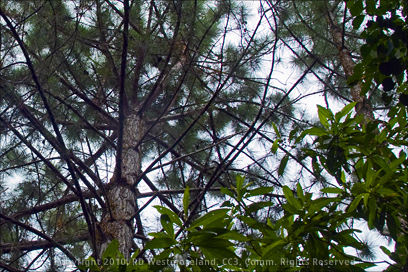 The poles were in the ground less than two weeks before they started falling over. Another reason why most telephone poles in PR are now made of cement. DOH!
The poles were in the ground less than two weeks before they started falling over. Another reason why most telephone poles in PR are now made of cement. DOH!
One point Andres stressed was that
Bejucos (vines) grow to cover anything over 5 foot tall. I have first hand experience with that, trying to keep the vines out of the trees where we live. Some were over 2″ thick and multi-stranded like wire rope. I’ve collected enough in 6 months to make my own vine charcoal (very soft). 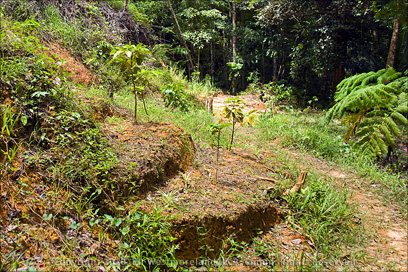 In the rainforest, you can cut a tree off, but it will never fall to the ground because of the vines. Dealing with vines is more work than dropping the trees. Later, he showed us a stand of Pine that had been planted sometime back, naturally free of vines. Many of these were over 40 feet tall.
In the rainforest, you can cut a tree off, but it will never fall to the ground because of the vines. Dealing with vines is more work than dropping the trees. Later, he showed us a stand of Pine that had been planted sometime back, naturally free of vines. Many of these were over 40 feet tall.
Near the end of our little nature hike, it began to rain. Something I had been expecting all day. Luckily, it passed in only a few minutes. Our last stop was at the wood shop where Andres spoke of the products they produce from Blue Mahoe. It’s an extremely dense and gorgeous exotic hardwood of variegated colors. The rough cut wood and finished articles are available through their Web site.
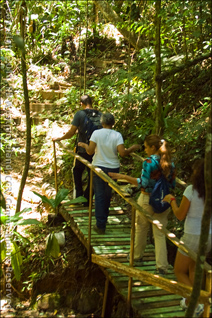 We made it back to the compound where everyone took a much deserved break.
We made it back to the compound where everyone took a much deserved break.
‘3T’ presented a wonderful meal of Cajun cooked chicken, pasta al dente with a mild home made sauce and a salad made up of goodies from the garden served with a home made dressing. It was gourmet, to say the least. Cold orange juice complemented the meal. I had seconds.
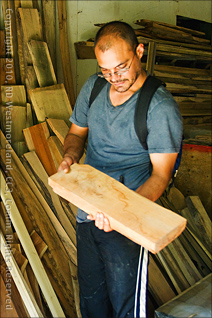 We did head up to where the green houses were to scout for bamboo shoots, but there were none to be found. What we did discover was an old wooden box with a Coqui frog hiding in it. The girl who found him scooped him up and I got my very first shots of the infamous coqui tree frog. They are tiny critters. About the size of a dime. There are several varieties of Coqui and not all make the famous sound we hear at night.
We did head up to where the green houses were to scout for bamboo shoots, but there were none to be found. What we did discover was an old wooden box with a Coqui frog hiding in it. The girl who found him scooped him up and I got my very first shots of the infamous coqui tree frog. They are tiny critters. About the size of a dime. There are several varieties of Coqui and not all make the famous sound we hear at night.
Afterwards, we set him free.
We relaxed a little more before
calling it a day, thanked our hosts
and headed home about 4:30PM.
I wrestled with what rating to give Tropic Ventures for a very long time.
For me, the experience rates a solid 4+ skulls. The gourmet meal, a 5. If you were an environmentalist or Eco-Tourist looking for the real thing, it would rate a 5. Diehard photographers would like it here too.

I shot 5 Gigs worth of images, I could have shot more. I hope to eventually come back and do a little exploring on my own. If you are a typical American tourist fresh off the cruise ship, I think you would most likely hate the place. It has almost none of the conveniences or service you would expect.
They have a mission, catering to snotty tourists is not part of it.
TROPIC VENTURES and Las Casas de la Selva is the real deal.
A little rough around the edges, but very Puerto Rican.
Thank you ‘3T’ and Andres for a great time, the Scurvy Dog
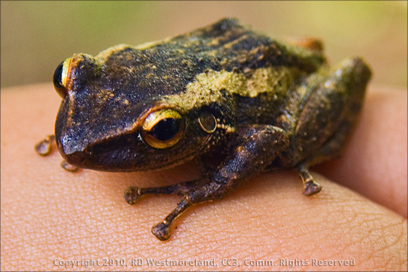 Special Note: The musical instrument shown above is called a Kalimba. It is often referred to as a Thumb Piano. I have seen other versions of these at Artesano craft shows here in PR. It originated from southern Africa and is very much a part of Puerto Rican and Caribbean heritage. A set of staggered metal tines are attached to a wooden sound box and strummed with the thumbs. The early African version had no sound box. Though there are many variations on the Kalimba, two stand out- The original 17 tine (note) Treble and the 15 tine Alto. Creative Playthings made it popular in the early 1960’s when they introduced it as an early learning musical instrument. Its popularity has continued to grow and is respected world wide. (per Wikipedia)
Special Note: The musical instrument shown above is called a Kalimba. It is often referred to as a Thumb Piano. I have seen other versions of these at Artesano craft shows here in PR. It originated from southern Africa and is very much a part of Puerto Rican and Caribbean heritage. A set of staggered metal tines are attached to a wooden sound box and strummed with the thumbs. The early African version had no sound box. Though there are many variations on the Kalimba, two stand out- The original 17 tine (note) Treble and the 15 tine Alto. Creative Playthings made it popular in the early 1960’s when they introduced it as an early learning musical instrument. Its popularity has continued to grow and is respected world wide. (per Wikipedia)
Don’t forget- Sunday, September 19th is “Talk Like a Pirate Day”.
I have a special post coming up, just for it.. Arrg!


Norman Voge says
Hey nice article
Lin Benyard says
I wish more people would write blogs like this. That are actually interesting to read. With all the fluff floating around on the net, it is a great change of pace to read a blog like yours instead.